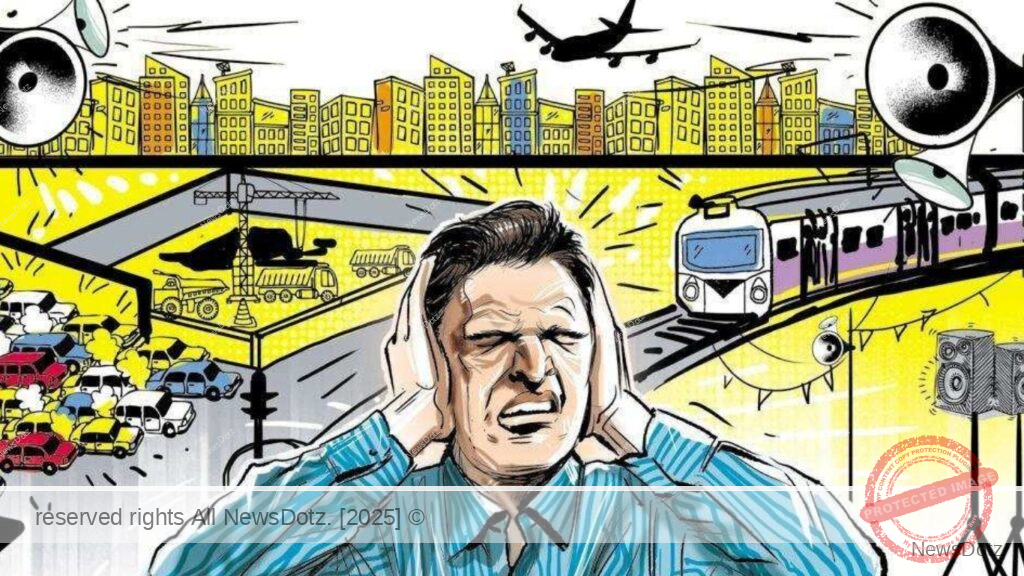Pune residents are overwhelmed by relentless noise from traffic, construction, and festivals, while PMC and MPCB dodge accountability. Despite legal noise limits, silence zones are routinely violated. Citizens, desperate for relief, demand a unified complaint system and real enforcement to reclaim peace in their neighborhoods.
Mrudula Narale
Pune: In Pune, the never-ending honking of horns, the thudding of construction work, and the persistent drumbeat of festival speakers have made life a battle for peace. Families, students, and residents are getting exhausted, stuck in an infuriating stalemate between the Pune Municipal Corporation (PMC) and the Maharashtra Pollution Control Board (MPCB), who appear more interested in shifting blame than resolving the city’s deteriorating noise pollution issue. While the cacophony chokes out peace, citizens are left pleading for mercy, their health and well-being on a knife’s edge.
The Central Pollution Control Board (CPCB) establishes definite limits for noise: residential zones must remain at 55 decibels by day and 45 by night, commercial areas at 65 by day and 55 by night, and silence zones around schools and hospitals at a whispery 50 by day and 40 by night. But in areas such as Hadapsar and Kalyani Nagar, such restrictions are a pipedream. The hum of traffic, the din of unplanned construction, and the cacophony of celebrations every night shatter the peace, leaving residents sleepless and stressed. For parents attempting to lull a child to sleep or students preparing for exams, the din is not just an annoyance but a constant disturbance that wears down their wellbeing.
Residents have poured their hearts into complaints, hoping for action, but the MPCB, which has the power to fine violators heavily, offers little clarity on its efforts. There’s no public record of how often they crack down on offenders, leaving people feeling ignored. The PMC, meanwhile, is under fire for letting smaller construction projects and public events spiral out of control, with permits issued but oversight absent. The upshot is a city with jackhammers and sound systems on autopilot and nobody stepping forward to answer for them.
The system seems in tatters. Traffic noise is taken care of by the police, PMC handles constructions and functions, and the MPCB handles general rules. With such an unplanned mechanism of tackling complaints, people go hopping between organizations but receive no finality of resolution. There’s no hotline to dial when a midnight festival rattles the walls, and noise monitoring records don’t exist. For a resident with a hospital nearby, where quiet is essential for recovery, or a school where children need concentration to study, the absence of accountability drives one crazy.
The cost is individual. Ongoing noise can trigger anxiety, increase blood pressure, or even impair hearing permanently. For seniors, it’s sleepless nights; for children, it’s difficulty concentrating. Silence areas, intended to give the most vulnerable some protection, are regularly flouted, leaving patients and pupils to suffer. In Hadapsar, one mother explained the toll of having to try and cover her family from the noise, and in Kalyani Nagar, a working professional explained how the noise renders working at home impossible.
Pune’s citizens are crying out for change—one point of contact to complain about violations, periodic noise surveys, and public statistics to make the officials accountable. They envision a city where festivals are celebrated with joy rather than mayhem, where building sounds do not overpower speech, and where silence zones actually do remain silent. While the PMC and MPCB play the blame game, citizens are left asking: who will rise to restore peace to them?

